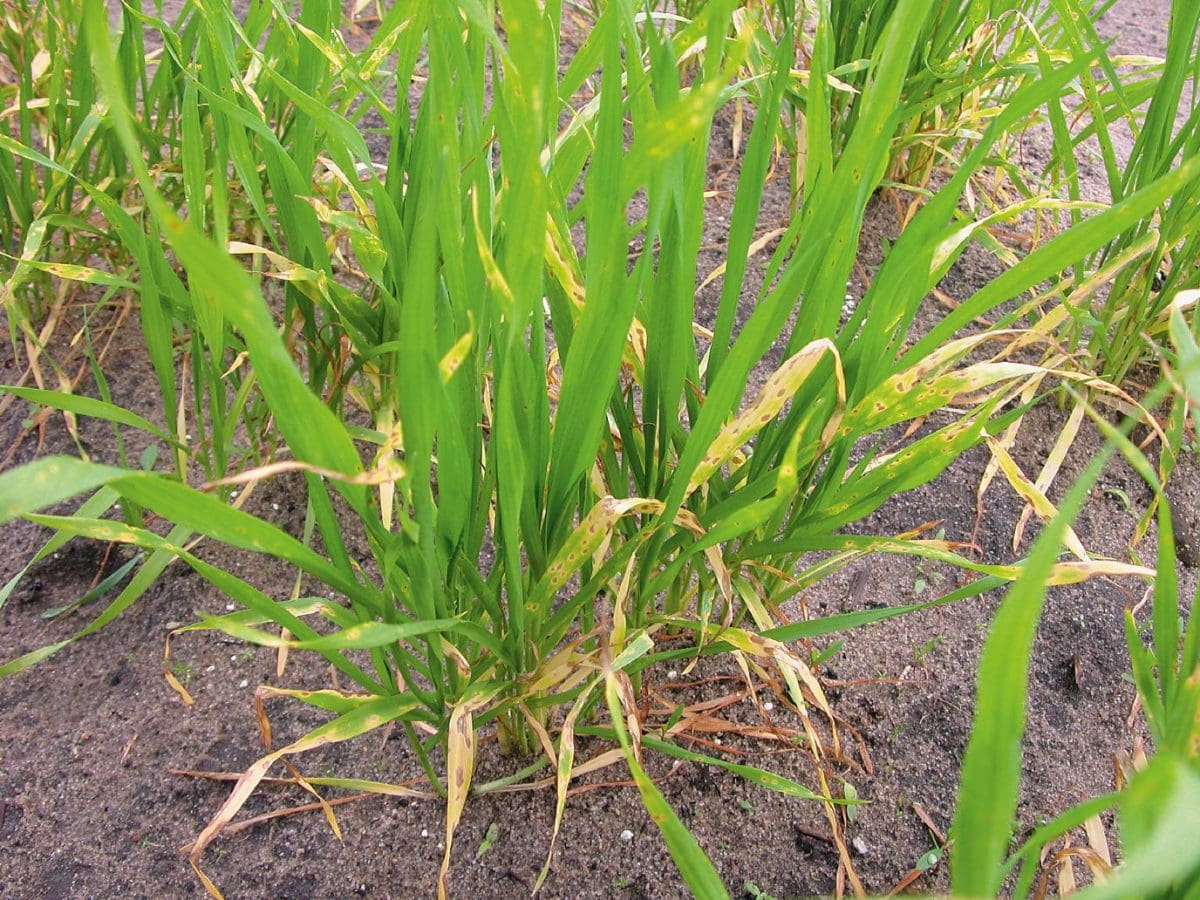
Growers are being urged to ensure they are properly diagnosing diseases and not confusing yellow spot (above) with damage from seasonal conditions. Photo: GRDC
NORTHERN growers have been anticipating an increase in disease risk with ongoing wet conditions creating the perfect storm for cereal leaf diseases such as rusts, net blotches and yellow leaf spot.
NSW Department of Primary Industries (DPI) cereal plant pathologist Steven Simpfendorfer said there have been reports of disease across the region,and he has also seen cases of potential misdiagnosis.
He said there have been cases of growers potentially misdiagnosing discolouration and yellowing of crops for diseases like yellow spot, when waterlogging, frost damage or other plant stresses including nitrogen deficiency were the cause.
“The wet conditions have generated a hard situation for growers because there’s massive potential for misdiagnosis of disease,” Dr Simpfendorfer said.
“For example, when paddocks are really wet and waterlogged, the soil can lose nitrogen through the process of denitrification, which can cause discolouration in crops when they become deficient in this nutrient.
“A lot of things can make crops go yellow – it doesn’t necessarily have to be yellow leaf spot – so growers need to be getting out in their paddocks to assess circumstances before making a call on fungicide application.”
The Grains Research and Development Corporation (GRDC) and NSW Department of Primary Industries (NSW DPI) have co-invested in assisting growers with diagnosing and managing in-crop diseases and communicating seasonal risk.
Dr Simpfendorfer said signs of a stressed plant can often be similar to a plant with disease, and in some cases, growers have treated yellowing crops with a blanket fungicide application because they have assumed the discolouration was caused by yellow spot.
“When you consider the price and availability of inputs lately, misdiagnosing a disease could be a significant cost to a grower.
“It’s so important that growers are walking into the paddock, looking at the root and tiller bases of cereal plants and checking for browning to help diagnose if below ground disease issues such as Fusarium crown rot are associated with the yellowing of lower canopies.
“If they see widespread yellowing of lower leaves in a cereal crop, they could also consider applying some urea to the area and watering in, then check it again in 5-7 days; that way they’ll know if the main issue is related to nitrogen deficiency.”
Disease cases confirmed
Dr Simpfendorfer said there have been confirmed cases of stripe rust, Fusarium crown rot and yellow spot across the north, and growers should remain cautious.
“While it’s good to see growers acknowledging disease risk, they should maintain logic when making management decisions and take the time to correctly diagnose disease before treating it.”
If growers suspect they have disease in their cereal paddocks upon inspecting plants, in the first instance they can send high quality photos to Dr Simpfendorfer on 0439 581 672 for rapid advice and then submit plant samples for more detailed diagnosis if required.
Source: GRDC

HAVE YOUR SAY